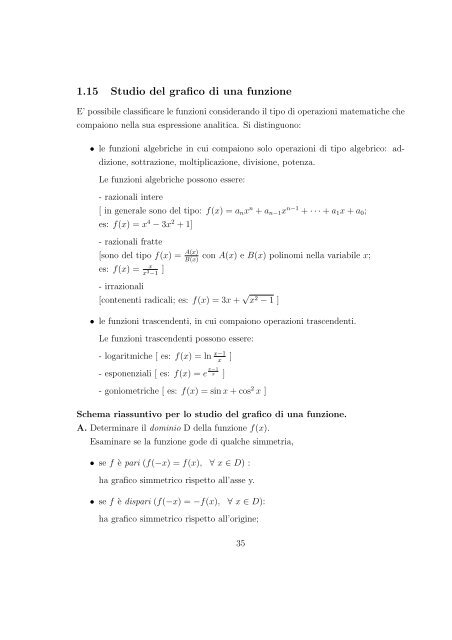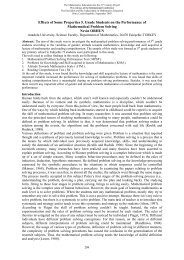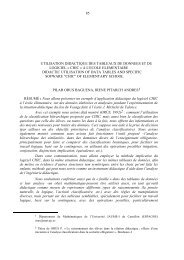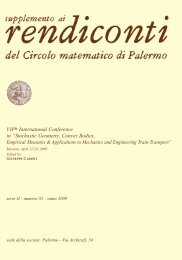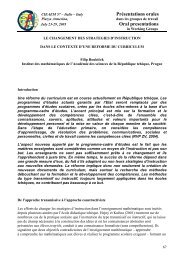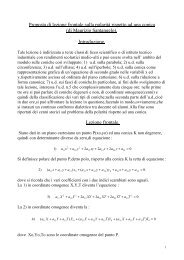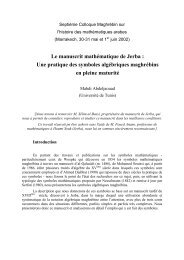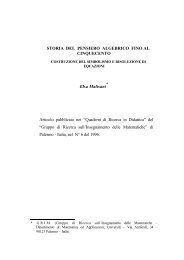Corso di Laurea in Architettura LM4 Sede di Agrigento Esercitazioni ...
Corso di Laurea in Architettura LM4 Sede di Agrigento Esercitazioni ...
Corso di Laurea in Architettura LM4 Sede di Agrigento Esercitazioni ...
Create successful ePaper yourself
Turn your PDF publications into a flip-book with our unique Google optimized e-Paper software.
1.15 Stu<strong>di</strong>o del grafico <strong>di</strong> una funzione<br />
E’ possibile classificare le funzioni considerando il tipo <strong>di</strong> operazioni matematiche che<br />
compaiono nella sua espressione analitica. Si <strong>di</strong>st<strong>in</strong>guono:<br />
• le funzioni algebriche <strong>in</strong> cui compaiono solo operazioni <strong>di</strong> tipo algebrico: ad-<br />
<strong>di</strong>zione, sottrazione, moltiplicazione, <strong>di</strong>visione, potenza.<br />
Le funzioni algebriche possono essere:<br />
- razionali <strong>in</strong>tere<br />
[ <strong>in</strong> generale sono del tipo: f(x) = anx n + an−1x n−1 + · · · + a1x + a0;<br />
es: f(x) = x 4 − 3x 2 + 1]<br />
- razionali fratte<br />
[sono del tipo f(x) = A(x)<br />
B(x)<br />
es: f(x) = x<br />
x 3 −1 ]<br />
- irrazionali<br />
[contenenti ra<strong>di</strong>cali; es: f(x) = 3x + √ x 2 − 1 ]<br />
con A(x) e B(x) pol<strong>in</strong>omi nella variabile x;<br />
• le funzioni trascendenti, <strong>in</strong> cui compaiono operazioni trascendenti.<br />
Le funzioni trascendenti possono essere:<br />
- logaritmiche [ es: f(x) = ln x−1<br />
x ]<br />
- esponenziali [ es: f(x) = e x−1<br />
x ]<br />
- goniometriche [ es: f(x) = s<strong>in</strong> x + cos 2 x ]<br />
Schema riassuntivo per lo stu<strong>di</strong>o del grafico <strong>di</strong> una funzione.<br />
A. Determ<strong>in</strong>are il dom<strong>in</strong>io D della funzione f(x).<br />
Esam<strong>in</strong>are se la funzione gode <strong>di</strong> qualche simmetria,<br />
• se f è pari (f(−x) = f(x), ∀ x ∈ D) :<br />
ha grafico simmetrico rispetto all’asse y.<br />
• se f è <strong>di</strong>spari (f(−x) = −f(x), ∀ x ∈ D):<br />
ha grafico simmetrico rispetto all’orig<strong>in</strong>e;<br />
35


